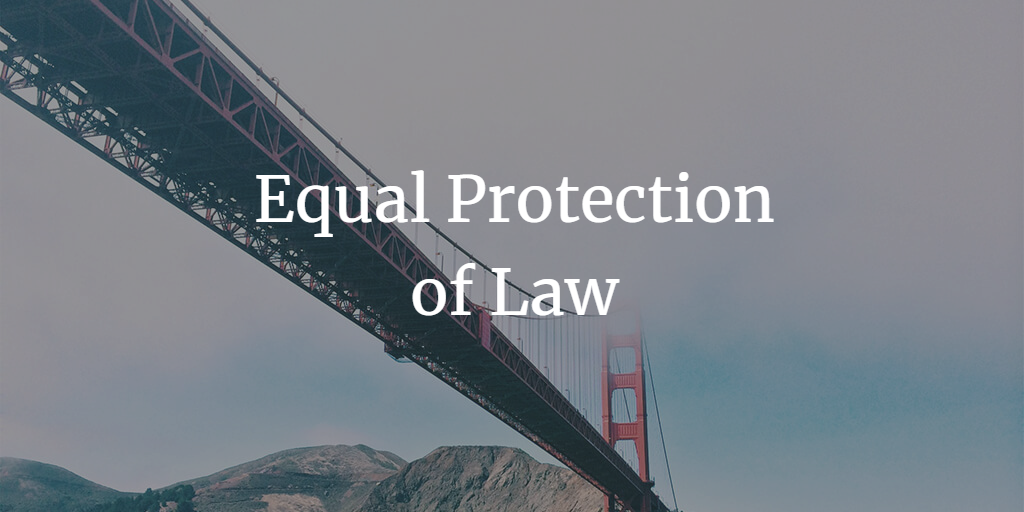Equal Protection of Law and Positive Discrimination

Table of Contents
Introduction
Equal Protection of Law: A Brief Overview
Positive Discrimination: Objectives and Implementation
Striking a Balance: Legal and Ethical Considerations
Challenges and Critiques
Conclusion
1. Introduction
Equal protection of law and positive discrimination are two legal concepts that attempt to address social inequalities and promote justice. While they may seem contradictory at first glance, a deeper exploration reveals the complex relationship between these two concepts. This article aims to provide a comprehensive understanding of equal protection of law and positive discrimination and analyze how they can coexist to create a just society.
2. Equal Protection of Law: A Brief Overview
Equal protection of law is a fundamental principle that asserts that all individuals, regardless of their background or circumstances, should be treated equally under the law. It aims to ensure fairness, prevent discrimination, and uphold the rule of law. This principle is enshrined in various international human rights instruments and national constitutions, including the United States Constitution (14th Amendment) and the Indian Constitution (Article 14).
3. Positive Discrimination: Objectives and Implementation
Positive discrimination, also known as affirmative action or reverse discrimination, is a policy that seeks to address historical and systemic discrimination by providing advantages to disadvantaged groups. It involves preferential treatment in areas such as education, employment, and political representation for underprivileged communities, including racial, ethnic, or gender-based groups. The primary objective of positive discrimination is to level the playing field, foster social inclusion, and achieve substantive equality.
4. Striking a Balance: Legal and Ethical Considerations
Balancing equal protection of law and positive discrimination is a challenging task. It requires carefully designed policies that consider historical context, contemporary realities, and potential consequences. Striking the right balance involves:
Proportionality: Measures must be proportional to the level of discrimination faced by a particular group and the intended goals of the policy.
Time-bound nature: Positive discrimination policies should be time-bound, with regular reviews and adjustments based on evolving social dynamics.
Merit-based considerations: Policies should ensure that merit remains a relevant factor in decision-making, albeit with necessary adjustments to account for systemic disadvantages.
Legal safeguards: Legal frameworks should provide safeguards against potential misuse of positive discrimination policies and ensure they remain consistent with the broader principles of justice and fairness.
5. Challenges and Critiques
Equal protection of law and positive discrimination face several challenges and critiques:
Perpetuation of stereotypes: Critics argue that positive discrimination may inadvertently perpetuate harmful stereotypes and stigmatize the very groups it aims to uplift.
Reverse discrimination: Some argue that positive discrimination may lead to unfair treatment of individuals from non-disadvantaged groups.
Meritocracy debate: The meritocracy debate centers on whether positive discrimination compromises merit-based selection and undermines efficiency in various sectors.
Dynamic social context: Evolving social, economic, and political realities require constant reevaluation and adaptation of policies.
6. Conclusion
Equal protection of law and positive discrimination are vital for fostering equality and justice in society. While they may appear contradictory, they serve complementary roles. Equal protection of law serves as a bedrock principle, ensuring that all individuals are treated fairly under the law. On the other hand, positive discrimination is a tool used to address historic and systemic disadvantages faced by certain groups.
Navigating the delicate balance between these two concepts can be challenging. It requires a nuanced understanding of societal dynamics, a commitment to justice, and the courage to reassess and adapt policies as social realities evolve. Achieving this balance is not just a legal issue, but a broader social, ethical, and political endeavor.
By understanding and appreciating the complexity of these concepts, we can better engage in discussions about equality, fairness, and justice in our societies. We can also contribute more effectively to the ongoing efforts to create more inclusive and equitable legal systems and societies.


